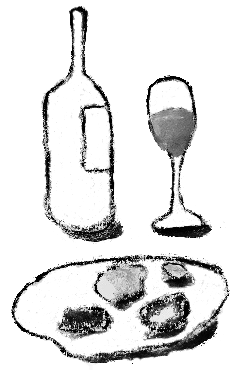
During the period from the beginning of May to the end of July, Santa Catarina (Brazil) enters the mullet fishing season, a time when this fish becomes the centerpiece of the local cuisine. In Florianópolis, you can buy fresh mullet on the beaches, directly from the fishermen, in the city’s various fishmongers, at the central market or at the fishermen’s stalls all over the region.
For those who prefer to enjoy the local cuisine away from home, many restaurants offer a variety of options to suit all tastes: fried mullet, grilled, on the grill, on the tile, stuffed mullet with pirão or even in beans. In addition, there are specific recipes using mullet roe, considered a delicacy not only in the state, but also in other parts of Brazil and the world.
The mullet season also brings a change in the landscape of some of the state’s beaches, as temporary fishermen’s ranches spring up, ready to wait for the large shoals arriving from Lagoa dos Patos, in Rio Grande do Sul. This period coincides with the transition from fall to winter and is a time for fishing, tasting and celebrating the mullet season. Throughout the state, festivities mark the arrival of the fish.
It was after moving to Florianópolis that I began not only to enjoy eating mullet, but also to understand and value other aspects that are not restricted to taste. I learned to wait for the mullet season by following the rhythm of the fishermen, tuning in to the rhythm of their migration and fishing. As well as making me feel a little part of the local population, this experience allows me to establish a different connection with food.
Most of the time, we’re not sure of the origin of the fish we’re eating. Most of them are anonymous fish, caught through increasingly predatory and unsustainable industrial fishing.
Consuming mullet during its fishing season is not only a chance to enjoy its freshness and taste a true taste of the sea, but it also contributes to strengthening artisanal fishing, local communities and environmental preservation. It’s a choice that goes beyond the plate and has positive impacts from both a cultural and environmental point of view.
À espera da tainha
Durante o período que vai do início de maio ao final de julho, Santa Catarina entra na temporada da pesca da tainha, um momento em que esse peixe se torna o centro da culinária local. Em Florianópolis, é possível comprar tainha fresca nas praias, diretamente dos pescadores, nas diversas peixarias da cidade, no mercado central ou nas bancas de pescadores espalhadas por toda a região.
Para aqueles que preferem desfrutar da culinária local fora de casa, muitos restaurantes oferecem uma variedade de opções para todos os gostos: tainha frita, na brasa, grelhada, na taquara, na telha, tainha recheada com pirão ou até mesmo no feijão. Além disso, existem receitas específicas utilizando a ova da tainha, considerada uma iguaria não apenas no estado, mas também em outras partes do Brasil e do mundo.
A temporada da tainha também traz uma mudança na paisagem de algumas praias do estado, à medida que surgem os ranchos provisórios dos pescadores, preparados para a espera dos grandes cardumes que chegam da Lagoa dos Patos, no Rio Grande do Sul. Esse período coincide com a transição do outono para o inverno, sendo uma época de pescaria, degustação e celebração da temporada da tainha. Em todo o estado, festividades marcam a chegada do pescado.
Foi após me mudar para Florianópolis que comecei não apenas a gostar de comer tainha como também a entender e valorizar outros aspectos que não se restringem ao paladar. Aprendi a esperar pela temporada desse peixe acompanhando o ritmo dos pescadores, sintonizando-me com o compasso de sua migração e pesca. Além de me fazer sentir um pouco parte da população local, essa experiência me permite estabelecer uma conexão diversa com a comida.
Na maioria das vezes, não temos certeza da origem dos peixes que estamos consumindo. A grande parte é de peixes anônimos, capturados por meio de uma pesca industrial cada vez mais predatória e insustentável.
Consumir a tainha durante sua temporada de pesca não só é uma chance de desfrutar seu frescor e saborear um verdadeiro gosto do mar, mas também contribui para o fortalecimento da pesca artesanal, das comunidades locais e da preservação ambiental. É uma escolha que vai além do prato e tem impactos positivos tanto do ponto de vista cultural quanto do ambiental.
